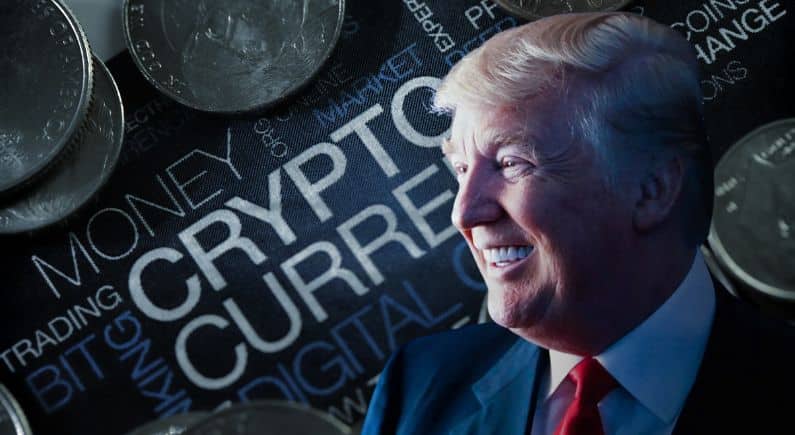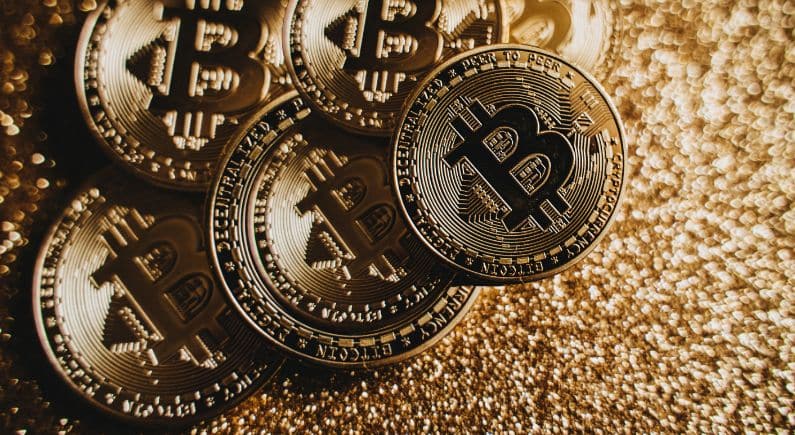Cryptocurrency Pricing, Market and Trading Digest for March 2022

Cryptocurrency is a fast-moving field and its markets are even more so. This is why every month AIBC brings you an overview of the most important and interesting cryptocurrency news.
This month, it’s the Russia-Ukraine crisis that has dominated the crypto scene. Bitcoin and others did recover from the initial slump, prompted by the announcement of sanctions for Russia.
Donations in crypto poured as an act of solidarity to the invaded Ukraine, with Cointelgraph tracking $37 million worth of crypto given to the country. This includes a $5 million donation in DOT by Polkadot founder Gavin Wood.
In other market news, surveys and reports reveal that institutional investors are more and more interested in investing in cryptocurrencies and more and more workers would also like to be paid in it.
There was bad news for graphics card maker Nvidia, however, as the company fell victim to a hack and the hacking group responsible is now selling software that can help crypto miners bypass limiters put in place by Nvidia to discourage them for using their chips for mining.
Crypto Markets Rebound After Russia Ukraine Invasion Drop, With Bitcoin Soaring
Ether and Bitcoin, the two most popular cryptos, rallied at the beginning of March, as the global crypto market capitalization exceeded $2 trillion, according to data from CoinGecko.
This comes after a crypto market shock that eliminated nearly $200 billion from the market following Russia’s invasion of Ukraine.
After trading below $39,000 at the end of February, Bitcoin jumped more than 13% to above $44,000. On February 24, when wide-reaching sanctions were announced by the US and the European Union, BTC and Ether both recorded a significant slump. In just a few hours, Bitcoin slumped to $34,459 and ETH went down to $2,308.
These were lowest levels seen in months for both of the two major cryptocurrencies. And despite the recent rally, both are still more than 35% below their highs recorded last November.
For a long time, cryptos were promoted by their supporters and investors as a hedge against rising prices (inflation) and an asset that can hold its value during periods of traditional market volatility. But recent events show that the crypto market is, instead of diverging from the traditional economy, in fact converging with it.
Nevertheless, coin exchanges have recorded levels of trade in Russian rubles and Ukrainian hryvnia surge to levels not seen in month. This is despite both currencies plummeting in value following the Russian invasion of Ukraine.
Unlike fiat currency, cryptocurrency is traded outside of banks, and since crypto exchanges have not banned Russian customers, there is worry that wealthy Russians could use Bitcoin to evade sanctions.
It “has gold-like properties in that if you hold it, you directly control the assets as opposed to governments and banks being in between,” Stéphane Ouellette, chief executive of FRNT Financial Inc explains. “In a period where banking is destabilized in a region, which is obviously happening in Europe right now, it would make sense to see some flows into BTC as people diversify away from the banking system.”
As US Treasury Department Formally Adds Crypto Rules to Russian Sanctions, Ukraine Receives $37 Million in Crypto Donations
On February 28, the US government has warned crypto exchanges to not make possible transactions for individuals and entities that were newly added to the Russian sanctions list.
To continue its ongoing effort to sanction Russia for its invasion of Ukraine, the Treasury Department published new regulations on March 1 that prohibit Americans from providing any support to certain Russian oligarchs and entities. The regulations go into effect on March 1, and they are part of an ongoing effort to sanction Russia for its invasion of Ukraine.
While these regulations apply to US-based entitles, the government has asked crypto exchanges around the world to prevent Russian entities from evading sanctions using cryptocurrency.
As the West is trying to prevent Russia from benefiting from cryptocurrency, Ukraine on the other hand has received $37 million in tracked crypto donations.
This is based on data tracked by Cointelgraph. The donations are mostly in Bitcoin, Ether, Tether and other altcoins.
The Reserve Fund for Ukraine, backed by the country’s native crypto exchange Kuna, seems to be the largest recipient of donations. According to the exchange’s official Telegram channel, it has raised around $13 million in crypto for Ukraine.
After that, there’s UkraineDAO, which is run by Nadya Tolokonnikova (of Pussy Riot, a Russian feminist protest music group), and which aims to raise funds for Ukrainian civic groups by selling a single nonfungible token (also known as an NFT). The current top offer for the NFT is $2.89 million.
Other initiatives to aid Ukraine with crypto are the Unichain Fund and Come Back Alive.
“We raise money for medicine, evacuation and repair needs, food and clothes. We raise funds only in crypto and use multi-sig wallets to be completely transparent,” said Anna Tutova, a member of Unchain Fund.
Polkadot founder Gavin Wood donated $5.3 million worth of DOT to Ukraine on March 1.
Professional Investors are Buying Into Bitcoin at Record Rates
According to recent reports from Coinbase, the exchange has seen an increase in trade from institutional clients in 2021.
It’s a remarkable jump from just $120 billion the year before to $1.4 trillion in 2021. Institutional investing now dwarfs the retail side ($535 billion) by a factor larger than two.
This represents a sharp trend reversal for cryptocurrencies in general. In the early days of Bitcoin and other coins, it was retail investors that ruled the roost. Retail investors, essentially, are ordinary people who invest through various platforms, and have no connections to big investing players such as banks and hedge funds.
These investors have for years traded on exchanges that offered a single way of investing: buy or sell, 24 hours a day, seven days a week. This has, according to economic experts, led to a small and erratic market – one where medium-sized trade can have a large impact.
But this is changing now, with the influx of institutional cash into the crypto market.
“It’s a completely different game now than it was,” says Leah Wald, the chief executive of Valkyrie Funds, which sells crypto-focused exchange-traded funds.
Growing interest from these investors reflects the increasing mainstreaming of crypto. Venture funds have invested billions into this market in 2021 and a survey of 300 institutional investors by State Street showed that more than 80% of these investors are now allowed exposure to cryptocurrencies.
What exact effect this will have on the market as a whole remains to be seen. For now, unlike some traditional assets, the increased influx of capital has not made Bitcoin any less volatile than it used to be.
More and More People Are Getting Paid in Crypto, New Industry Report Reveals
A recent report by the California-based payroll and compliance firm Deel has found a 10% month over month increased in people wanted to be paid in cryptocurrency since November 2021.
Latin America is leading the trend, showing 52% of crypto withdrawals, EMEA is next with 34% and North America and APAC countries both have 7% of crypto paycheck withdrawals.
Most of these transactions are Bitcoin (63%) followed by Ether and USDC (7%). Solana and Dash are also present at 2%.
Small businesses are also showing interest in crypto. A survey from Visa published this January shows that 24% of SMBs are planning to accept these types of payments.
Seventy-three per cent of respondents to the same poll claimed that embracing new types of digital payment choices is a critical element that would affect company development in 2022.
The survey included 2,250 small company owners from nine nations, including the United Arab Emirates, Hong Kong, the United States, and Canada.
A consumer element of the poll was also conducted, with 1,500 individuals from nine different markets taking part. In this area, more than half of the respondents said that they anticipate to be totally cashless within ten years after taking part in the survey. Meanwhile, 41% of respondents said that they had abandoned a purchase at a physical shop because digital payments were not accepted at the time.
These surveys are part of the same mainstreaming trend that institutional investing reveals. From a payment method and investment scheme for online nerds, cryptocurrencies are becoming more and more accepted in the wider society and economy.
The Avalanche Blockchain Is Now Available to 4.5 Million Customers via the Wirex Payment Ecosystem, According to the Company.
Avalanche, the open network for smart contracts and decentralized applications and its token AVAX have been integrated into the Wirex platform.
Wirex is a digital payment platform that lets users spend 62 fiat and cryptocurrencies and more than 61 million locations worldwide. It has over 4.5 million users in more than 120 countries across its app, wallet and payment platforms.
Users will be able to receive, transmit, store, and trade AVAX tokens, as well as add their own custom tokens, thanks to the Avalanche blockchain. Several AVAX-based tokens are expected to be added to the company’s platform during the following several months.
Wirex customers will also be able to earn 20% interest annually on AVAX through the platform’s decentralized finance savings product X-Accounts.
“Wirex continues to innovate and build partnerships that strengthen our offerings, and the addition of Avalanche is helping to develop use-cases for the Wirex ecosystem,” said Pavel Matveev, CEO and Co-Founder of Wirex in a press release “Avalanche’s reputation for improving blockchain’s accessibility closely aligns with Wirex’s, where we can together help to offer users of all backgrounds more choice and flexibility over how they wish to use crypto.”
Avalanche is another of the scaling solutions for blockchains, and is compatible with the Ethereum Virtual Machine, like Polygon and other such solutions.
Nvidia Hackers Are Selling Software That Allows Users to Circumvent the Ethereum Hashrate Limit.
A hacker group by the name of LAPSUS$, which is claiming responsibility for a recent hack of chipmaker Nvidia, has said that it is now selling software that can bypass the Ethereum Lite Hash Rate limiter that the company had implemented to prevent crypto miners from competing with gamers for its graphics cards.
Crypto mining has in recent years led to a sharp increase in graphics card prices, as miners have been buying them up to use in their mining rigs.
Some 1 terabyte of data was stolen in an attack including sensitive internal information.
“We are aware that the threat actor took employee credentials and some Nvidia proprietary information from our systems and has begun leaking it online,” a representative from Nvidia said.
The hackers, as well as many crypto miners, seem to be angry about Nvidia’s decision to introduce hashrate limiters into its flagship GPU. This was done, according to the company, with the goal of making more products available for core gamers.
Nvidia has also added that almost all of its Ampere-based products will incorporate this limited to deter crypto miners from using them.
The company did introduce crypto-specific mining chips in 2021 but they have proven less than popular.
“We decided to help [the] mining and gaming community, we want Nvidia to push an update for all [GeoForce RTX 30-series] firmware that remove every LHR limitations,” the group said in its public Telegram chat. It noted that it has a customized version of a driver and firmware that could bypass the limiter.
Crytpo Exchanges Decide They Won’t Ban Russian Customers
Most of the big crypto exchanges have decided not to block access to Russian customers, sparking fears that cryptocurrency could be used to bypass sanctions on the country due to its invasion of Ukraine.
In spite of a request by the Ukrainian government for a blanket ban on Russian customers, several of the world’s major cryptocurrency exchanges, including Binance and the U.S.-based Kraken and Coinbase, have refrained from implementing such a measure. They said that they would filter users and ban anybody who has been identified as a target of sanctions.
“We are not going to unilaterally freeze millions of innocent users’ accounts,” Binance told the economic magazine Fortune in a statement. “Crypto is meant to provide greater financial freedom for people across the globe. To unilaterally decide to ban people’s access to their crypto would fly in the face of the reason why crypto exists.”
Jesse Powell, CEO of Kraken, had a similar take on the situation.
“Our mission at [Kraken] is to bridge individual humans out of the legacy financial system and bring them into the world of crypto, where arbitrary lines on maps no longer matter, where they don’t have to worry about being caught in broad, indiscriminate wealth confiscation,” he said.
“Our mission is better served by focusing on individual needs above those of any government or political faction…Besides, if we were going to voluntarily freeze financial accounts of residents of countries unjustly attacking and provoking violence around the world, Step 1 would be to freeze all U.S. accounts. As a practical matter, that’s not really a viable business option for us,” Powell added.
Nevertheless, crypto companies are not turning a blind eye to the crisis in Ukraine. Binance has pledged to donate at least $10 million to humanitarian efforts that address the growing Ukrainian refugee problem.









